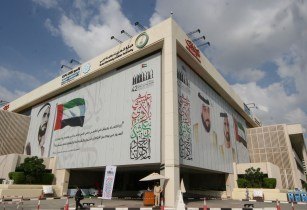A new architecture for mobile networks, launched by Nokia Siemens Networks at CTIA Wireless 2011, is able to direct mobile broadband capacity to where it is needed most. Known as Liquid Radio, the approach enables a more economic use of network resources through sharing and redistributing capacity based on user demand.
p>A new architecture for mobile networks, launched by Nokia Siemens Networks at CTIA Wireless 2011, is able to direct mobile broadband capacity to where it is needed most. Known as Liquid Radio, the approach enables a more economic use of network resources through sharing and redistributing capacity based on user demand.
Nokia Siemens Networks has also announced its innovative Flexi Multiradio Antenna System as part of the Liquid Radio architecture. The company expects to begin to deploy this architecture during 2011.
?Liquids are unconstrained, streaming to fill any gap or space,? said Thorsten Robrecht, head of Network Systems product management, Nokia Siemens Networks. ?In the same way, our Liquid Radio architecture removes the constraints of traditional mobile broadband networks to address the ?ebb and flow? of traffic created by users? movements across the network.?
At the heart of Nokia Siemens Networks Liquid Radio is the ability to respond to the fluid demands of today?s networks with a technique known as baseband pooling. This approach centralizes the resources needed to undertake processing functions common to every base station in a given area. Baseband pooling helps to achieve a more cost efficient sharing of resources over a large geographical area.
Nokia Siemens Networks Flexi Multiradio Antenna System is based on active antenna technology that combines antenna and radio part in one functional enclosure, built with dedicated power amplifiers for each antenna element. The active antenna allows beamforming ? focusing a particular radio connection and directing it to a specific user ? as well as handling of multiple technologies in one unit. Together with other layers of coverage provided by macro, pico and micro site configurations, beamforming allows capacity to be directed exactly where the user requires it, delivering up to 65% capacity gain.
The Flexi Race is the next evolutionary step in miniaturization. It will be the basic element to build next generation active antennas and future products to build micro and pico cells. Due to its compact size, the Flexi Race is equipped with additional intelligence and scaling options required for this type of deployments.
With its unique, broad product and professional services portfolio, Nokia Siemens Networks helps operators to build unified heterogeneous networks. This approach reduces management complexity and allows connectivity for different layers of the network in one unified network and user experience. This is orchestrated by the company?s Self Organizing Networks (SON) capability and its continuous evolution to fully support cognitive self learning and adaptive networks.
?We foresee demand for network capacity increasing to up to 1 GB per user per day[1] ,? said Robrecht. ?Not only will this require substantial network investments, but also a unique combination of base station sites for wide area coverage complemented by Wifi and small, compact micro, pico and femto cells. Nokia Siemens Networks Liquid Radio ensures that existing network investments are fully leveraged and that future investments deliver the return necessary to support today?s pressing challenge of maintaining and transitioning GSM, evolving 3G and introducing LTE and LTE-Advanced.?




















